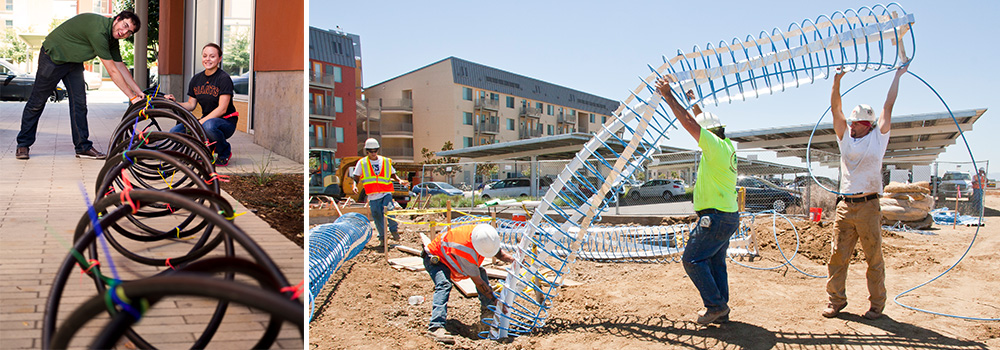
Problem
Solution
Goal and Results
2019
This past year, WCEC researchers and collaborators developed and calibrated a computational model for the shallow bore helical GHE. The model uses electrical analogies of capacitance and resistance (CaRM) to describe the heat transfer in the ground source heat pump system.
Researchers validated the model by comparing results with those reported in the literature and from field data. In addition, the researchers developed a computational fluid dynamics (CFD) model to simulate heat transfer phenomena that the simplified CaRM model neglects and to also obtain more detailed results.
2018
This past year, WCEC researchers and collaborators developed and calibrated a computational model for the shallow bore helical GHE. The model uses electrical analogies of capacitance and resistance (CaRM) to describe the heat transfer in the ground.
Researchers validated the model by comparing results with those reported in the literature and from field data, with excellent agreement as shown in the figure above. In addition, researchers developed a computational fluid dynamics (CFD) model to test other design variables that the CaRM model was unable to simulate. In both models, the temperature of water returning from the ground was predicted with an accuracy of 0.1°C .
Publications and Downloads
- Low-Cost, Large-Diameter Shallow Ground Loops for Ground-Coupled Heat Pumps (Project Report, 2021)
- Techno-economic Parametric Analysis of Large Diameter Shallow Ground Heat Exchanger in California Climates (Journal Article, 2020)
- A revised Capacitance Resistance Model for Large Diameter Shallow Bore Ground Heat Exchanger (Journal Article, 2019)
- Performance Assessment of a Wide Diameter Shallow Bore Ground Source Heat Exchanger (Report, 2016)
- Heat Pump Assisted Diurnal Heat Rejection System (Report, 2014)
- Directional-Bore Ground Source Heat Pump Field Report (Report, 2014)
